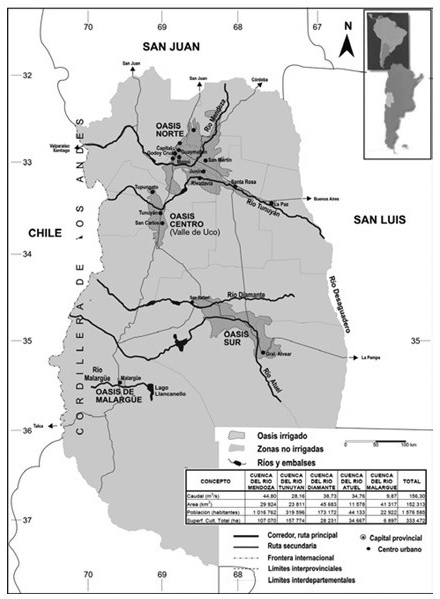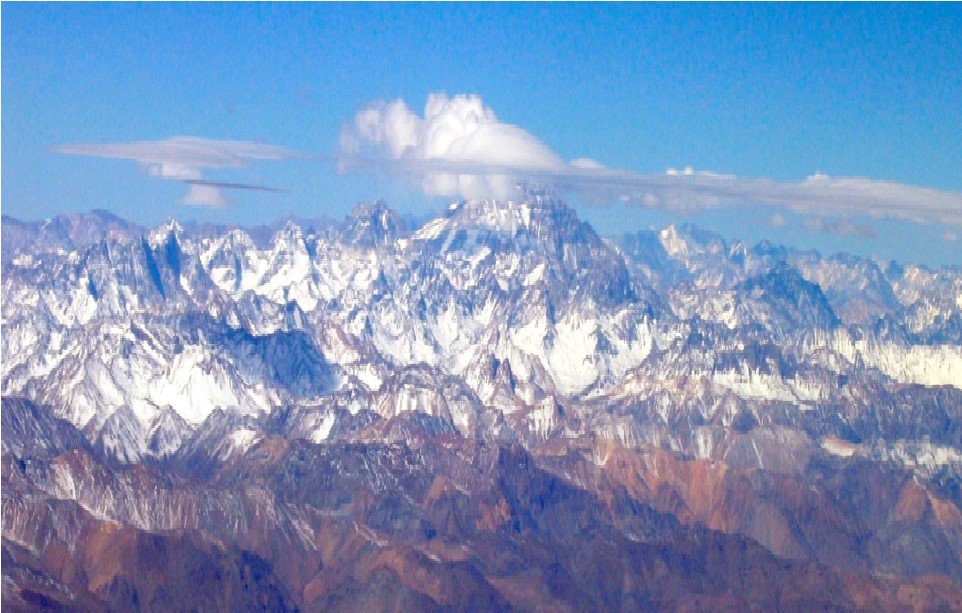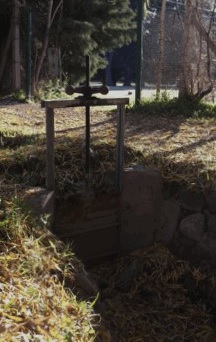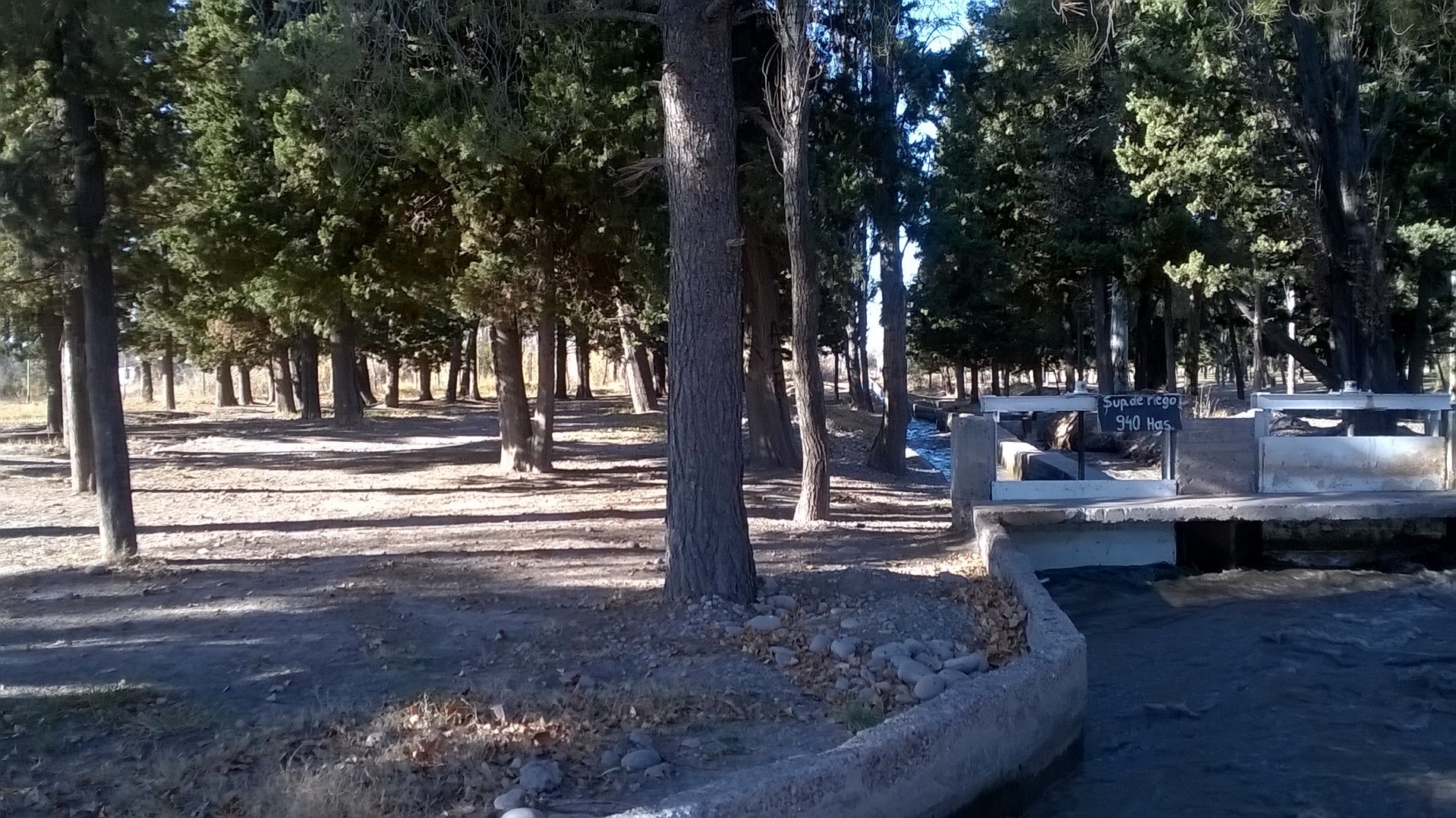
Despite a relatively reliable water supply, a solid water infrastructure system that dates back hundreds of years, and an autonomous and strong water governance system, the Argentinean province of Mendoza still faces an uncertain future for water security. While the snowmelt of the Andes provides water for irrigation to the booming and increasingly renowned vineyard sector, inequities persist, making some groups more vulnerable than others.
Water managers in the province work very hard to meet all the water needs of the people, yet embedded social hierarchies prevail in the relationship between water and land ownership. Equity issues are combined with uncertainties in water supply from climate change which threatens long-term water security in the region.
An IWSN team in Mendoza – led by Drs. Paula Mussetta and Facundo Martín of CONICET, the Argentine National Scientific and Technical Research Council, and the National University of Cuyo – has had a longtime interest in the region’s water security.
Overview
Mendoza is a province located in the Southern Central Andes Region of Argentina. The climate in Mendoza is extremely dry with rainfall of 200-300mm per year. This aridity makes water critically important for the social, economic and cultural life of the province. The main water source is the glacier and snow melt that feeds the Mendoza River. This surface water is used for agriculture. Irrigated areas, called ‘oases’, occupy only 4% of the provincial territory, yet 95% of the population and their related activities are concentrated here.

Climate change projections for the region
Climate change scenarios for Mendoza’s region include projections of an increase in temperatures in the cordillera, a trend that would have a consequent overtaking at the beginning of the melting snow season and a greater loss of mass of the Andean glaciers. These conditions would have a double implication for irrigated agriculture: the overtaking of the melting would mean more water available at the beginning of spring (when the demand for traditional crops is greater), but the flows would decrease in the summer and autumn, (seasons in which reservoirs are recharged for the next agricultural cycle). However, climate scenarios also project an increase in the summer rains falling on the plains to the east of the Andean region. This trend has critical implications for agriculture in the short term: damage caused by excessive moisture in the crop have recently generated dramatic losses in production. At critical moments during the growth of the crops, an increase in summer rainfall increases the risks to the health and management of crops during harvest.

Water governance
In Argentina, unlike in other countries, provinces have autonomy for water management and ownership. Mendoza is the province with the largest number of irrigated hectares in the country (360,000 hectares). The infrastructure of the irrigation system is composed of a complex network of water courses. These aqueducts allocate water along the oases. This distributive structure of the water resource has its origin in the native people – Huarpes – who created and implemented the irrigation canals for their agricultural activities long before the arrival of the Spaniards in the 15th century.
Water management in Mendoza is projected as an integral water system that fulfils all uses (human, agriculture, industrial, ecological). However, there is in practice a clear social hierarchy on the allocation of water resources. This derives from a vineyard development model established in the 19th century: the water flowing down the Andes Mountain Range is stored and allocated to agricultural irrigation.
This model, oriented to grape production, shaped the water management system in Mendoza and still continues today. At that time, it was designed by a planning elite with enough political, social and economic power to influence the productive destination of the region.
Water rights
The DGI (Departamento General de Irrigación) is the water authority that provides irrigation licenses. DGI oversees the complex web of full, surface water rights (definitive, eventual, and private) and precarious rights (temporal, discharge). Definitive rights are those registered at the time of the promulgation of the Water Law (1916); eventual rights are those registered after the promulgation of the Water Law (many in 1920); precarious rights can be revoked for justified resolution by the Superintendent; drainage rights correspond to properties that use surplus water; private rights are those with water arising and ending within a property for which registration is voluntary. Although a complex system of priority exists between definitive rights and eventual rights in order of their antiquity, followed by other rights, a conditionality on flow is also evident. This conditionality was established in the Constitution of 1916 that states that all new concessions are eventual and require a report by the DGI and a vote of two-thirds of both legislative chambers (art. 194 of the Constitution of Mendoza) until a measurement of the flow is made. Because of this, no new definitive rights exist after the general Water Law of 1916.

The relationship between water and land-ownership
One of the most salient features of this institutional water governance system in Mendoza, in terms of surface water, is the inherence principle (the basis of water allocation). The use of public water is a right and is governed on the basis of water and land inherence, or the principle that water is inherent to the land where it is located (Provincial Constitution, 1916; Articles 186-196). One and a half centuries after the development of these legal rules and the Mendoza oases, this institutional practice has not changed. The condition that without irrigation, land is considered unproductive, has not changed either.
The inherence of water to land is the legal device that prevents water transfers between uses or users. It is the formal padlock to the water market, and the transfer between sectors, to protect agricultural use.
Today, the water security that this regulatory device seeks to achieve is jeopardized by the informal and discretional situations regarding water management, especially because of water availability. In this way, the supply management and the inherence of the water to land (without considering other factors) not only promote mechanisms as exclusive as the market but, above all, emphasizes the pre-existing socio-economic vulnerabilities, deepening the gap between the poorest and the most powerful.
Conclusion
In summary, climate trends indicate an increase of the impacts associated with the decline in the availability of water from the Andes, the occurrence of more severe droughts and increasing temperatures, all trends embedded in the extreme variability that characterizes the desert regions. This poses serious challenges for the oases and the local water policy, confirming the economic, social and political transversality of vulnerability to climate change of farmers and their livelihoods.
